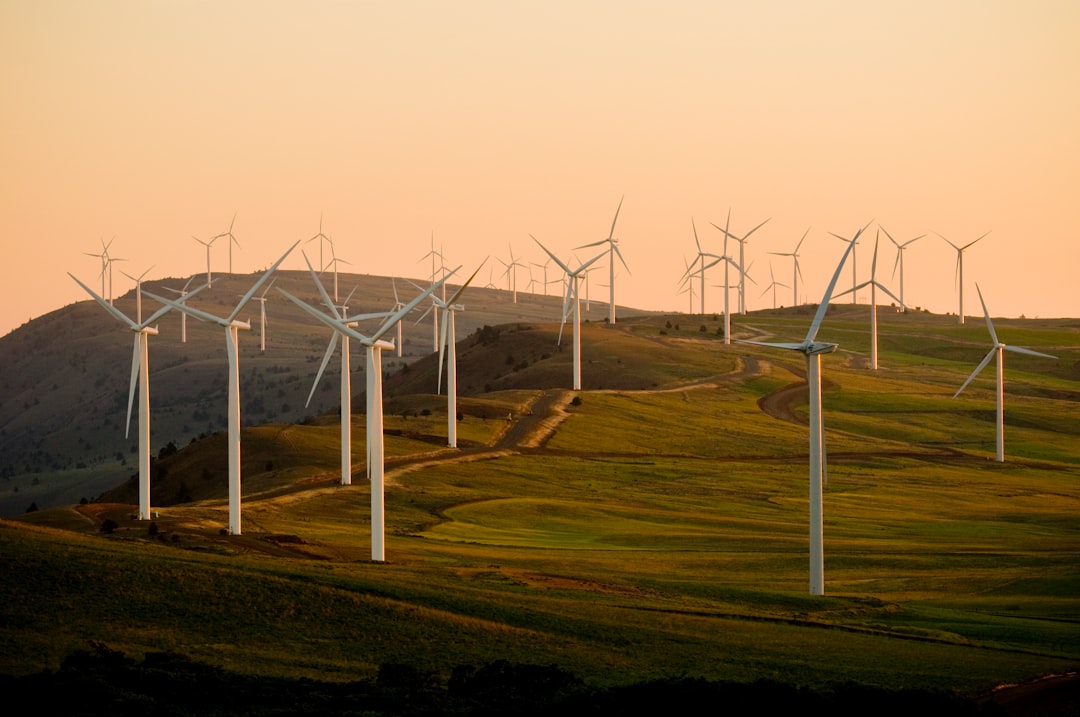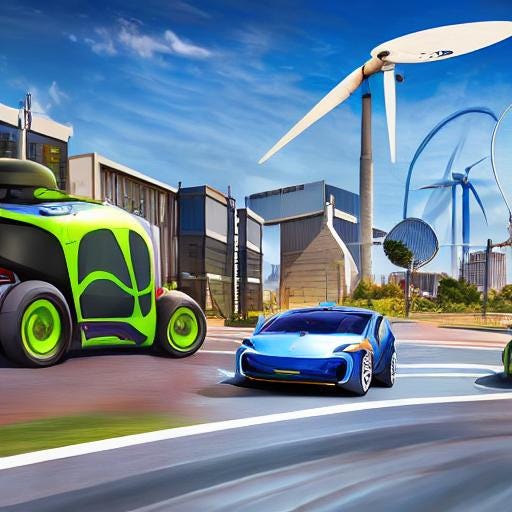Powering the Future: Where Will the Electricity for Electric Vehicles Come From in the UK?
As electric vehicles rise in the UK, where will the electricity come from? This article explores the growth of renewables like wind and solar power for clean EV charging.
As the United Kingdom gears up for a greener future, electric vehicles (EVs) are rapidly becoming the new norm on British roads. Driven by government policy, environmental awareness, and advancements in EV technology, the shift towards electric mobility is accelerating. But a question that often arises is, "Where will the electricity for electric vehicles come from?" Let's explore the UK's plans for powering EVs, focusing on renewable energy sources and the capacity of the UK's electricity grid.
The UK's Renewable Energy Revolution
Wind Power: The UK's Green Energy Champion
The United Kingdom is a global leader in wind power, boasting both onshore and offshore wind farms. With the largest offshore wind capacity in the world, projects like the UK's Hornsea One, completed in October 2019, are setting records. The government and industry are targeting at least 30,000MW of offshore wind capacity by 2030, positioning wind power as a crucial source of EV electricity.
Solar and Other Renewable Sources
Solar power, hydropower, and bioenergy also contribute to the UK's renewable energy mix. With over a million solar installations across the country, these renewable sources are providing an increasingly sustainable electricity supply for electric vehicles.
The Historic Shift Towards Renewable Energy
In the third quarter of 2019, the UK's renewable energy sources generated more electricity than coal, oil, and gas combined for the first time since 1882.
Since that historic moment, the UK has continued to invest in and expand its renewable energy capacity. By the end of 2021, renewable energy accounted for over 40% of the UK's total electricity generation. This growth is driven by government incentives, technological advancements, and a commitment to achieving net-zero carbon emissions by 2050.
This shift towards renewable energy is vital for EVs, as it ensures that the electricity used to charge them is becoming cleaner.
The Role of the National Grid in EV Charging
Managing Supply and Demand
The National Grid is at the heart of the UK's electricity system, responsible for balancing supply and demand across the country. As the number of electric vehicles on British roads continues to grow, the demand for electricity to charge these vehicles is also increasing. This presents both challenges and opportunities for the National Grid.
Smart Charging Solutions
Smart charging solutions are becoming essential in managing this growing demand. These systems can charge EVs during off-peak times when the need for electricity is low, such as late at night or early in the morning. By shifting EV charging to off-peak hours, the National Grid can balance the load on the grid, ensuring a stable electricity supply and making efficient use of existing infrastructure.
Vehicle-to-Grid (V2G) Technology
An emerging innovation in the field of EV charging is Vehicle-to-Grid (V2G) technology. V2G allows electric vehicles to not only draw power from the grid but also feed electricity back into it. This bi-directional flow of energy can help stabilize the grid during peak demand periods. Electric vehicles can act as mobile energy storage units, providing a flexible and responsive energy resource for the National Grid.
Infrastructure Upgrades and Investments
To support the growing number of electric vehicles, the National Grid is investing in infrastructure upgrades and expansions. This includes adding new transmission lines, substations, and other essential components to handle the increased load. These investments are crucial for maintaining the reliability and resilience of the electricity system as EV adoption accelerates.
Collaboration with Local Distribution Network Operators and Utilities
The National Grid is also collaborating with local distribution network operators and utility companies to develop localised charging solutions. This includes creating community charging hubs, supporting workplace charging, and developing urban charging networks. These localised solutions help distribute the load evenly across the grid and provide convenient charging options for EV owners.
Home Charging and Solar Power: A Sustainable Solution
Many UK EV owners charge their vehicles at home, benefiting from off-peak electricity rates and the convenience of home charging. For those with solar panels, the benefits are even greater. By using electricity generated by their own solar systems, homeowners can reduce their reliance on the grid and power their vehicles with 100% renewable energy.
With the advent of smart home energy systems and battery storage solutions, homeowners can store excess solar power for use at night, further enhancing the efficiency of home charging.
Conclusion: The Bright Future of EV Charging in the UK
So, where will the electricity for electric vehicles come from in the UK? The answer lies in a mix of renewable energy sources, led by wind power. As the UK continues to invest in renewable energy, smart grid solutions, and energy storage, the future of EV charging looks promising.
The UK's commitment to renewable energy is about more than meeting climate goals; it's about paving the way for a sustainable transport future. With the ban on new petrol and diesel cars set for 2030, the demand for electric vehicles, and consequently, electricity, is set to rise.
The continued growth of wind, solar, and other renewable technologies will ensure a reliable supply of clean electricity for EVs. Moreover, the shift towards renewable energy means that the carbon footprint of EVs will decrease over time, making electric vehicles an increasingly sustainable choice for UK drivers.
The UK's renewable energy sector is well-positioned to meet the growing demand for electric vehicle charging, contributing to a greener transport future for the country.
Sources
Unravelling Misconceptions: A Comprehensive Look at the Sustainable Energy Transition
As the global community grapples with the pressing need to mitigate climate change, the transition from fossil fuels to sustainable energy sources is a topic of paramount importance. However, this transition is often clouded by misconceptions and fears. This article aims to dispel these myths and provide a comprehensive understanding of the sustainable …
The Future of Transport: Electric Vehicles and Renewable Energy
EVs offer a cleaner, more sustainable alternative to traditional petrol and diesel vehicles, helping to reduce our carbon footprint and combat climate change. But what exactly are electric vehicles, and how do they fit into our renewable energy future? This article aims to answer these questions and more, providing a comprehensive overview of the role o…







